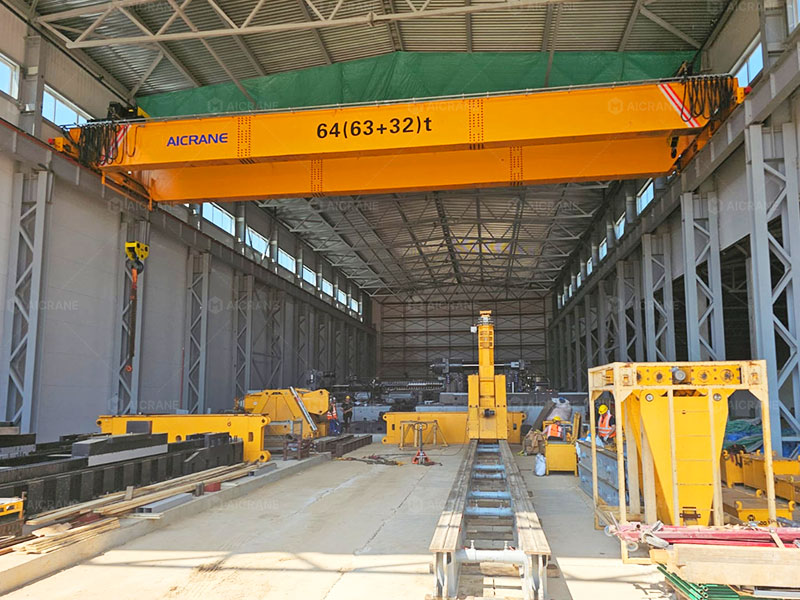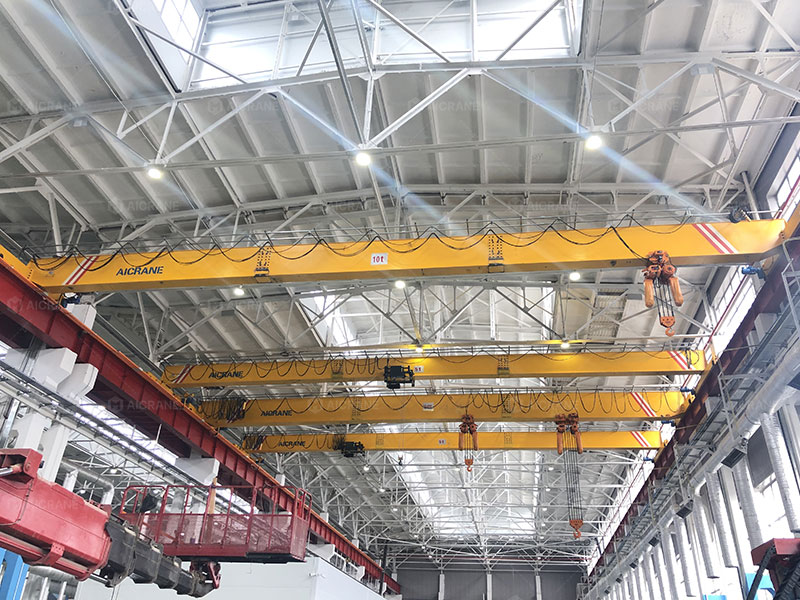Overhead cranes are indispensable in modern industrial operations, ranging from manufacturing workshops and assembly lines to steel plants and power stations. At the heart of their performance lies the girder, the primary structural component that supports and transfers loads. The load-bearing capacity of overhead crane girders determines not only how much weight the crane can lift, but also its safety, longevity, and overall efficiency. Understanding this capacity is crucial for operators, engineers, and decision-makers to ensure cranes perform reliably under demanding conditions.
This article explores the fundamentals of overhead crane girder design, the factors influencing load-bearing capacity, testing and safety considerations, and best practices for selecting and maintaining crane girders.

What Is an Overhead Crane Girder?
In an overhead crane system, the girder serves as the main horizontal beam spanning between end trucks. It supports the trolley and hoist, which travel along its length to lift and move loads. Depending on the crane’s design and application, girders can be:
-
Single Girder: One beam supports the trolley and hoist, usually for lighter to medium-duty applications (up to around 20–25 tons).
-
Double Girder: Two parallel beams provide additional strength and stability, suitable for heavy-duty and high-capacity lifting (up to hundreds of tons).
The girder is a structural element designed to resist bending, shear, torsion, and deflection caused by the weight of the load, the hoist, and dynamic forces during operation.
Why Load-Bearing Capacity Matters
The load-bearing capacity of a girder defines the maximum safe load the crane can handle. If this capacity is underestimated or exceeded, the consequences can be severe:
-
Structural Failure: Overstressing a girder can lead to cracks, buckling, or catastrophic collapse.
-
Safety Hazards: Accidents caused by girder failure can endanger workers and damage valuable equipment.
-
Reduced Service Life: Even if failure does not occur immediately, excessive stress accelerates fatigue and reduces the girder’s lifespan.
-
Regulatory Non-Compliance: Exceeding rated capacity violates safety codes and industry standards.
Therefore, understanding and respecting load-bearing limits is fundamental to safe crane operation.

Factors Influencing Load-Bearing Capacity of Girders
Several key factors determine how much weight an overhead crane girder can safely support:
1. Material Strength
The girder’s material properties – typically structural steel – directly impact its capacity. High-strength steel with proper yield strength and toughness resists deformation and fatigue better. Material selection also accounts for environmental conditions (e.g., corrosion resistance in marine environments).
2. Cross-Section Design
The shape and dimensions of the girder’s cross-section influence its ability to resist bending and torsional stresses. Common designs include:
-
I-beams (standard for many single girder overhead cranes).
-
Box girders (welded box sections, common in double girder overhead cranes, offering higher torsional rigidity).
The moment of inertia of the section is a critical parameter – larger values allow the girder to carry greater loads with less deflection.
3. Span Length
The longer the girder span, the higher the bending moment under the same load. This means longer spans require deeper or stronger girders to maintain safe capacity.
4. Crane Capacity and Duty Cycle
The rated lifting capacity of the girder overhead crane directly ties into girder strength. Additionally, cranes designed for higher duty classes (frequent heavy lifts, long operating hours) require sturdier girders with enhanced fatigue resistance.
5. Load Distribution
Loads are not always static or perfectly centered. Dynamic factors such as acceleration, deceleration, and side pulling introduce additional stresses. Unevenly distributed loads increase localized stress, demanding careful design consideration.
6. Deflection Limits
Even if a girder can technically carry the load, excessive deflection can impair safe operation. Standards such as FEM, CMAA, or ISO specify deflection limits (e.g., span/1000 for vertical deflection) to prevent structural distortion.
7. Manufacturing Quality
Welding quality, dimensional accuracy, and assembly tolerances affect the girder’s strength. Poor fabrication can lead to weak points that reduce actual load-bearing capacity.
Methods to Determine Load-Bearing Capacity
Engineers use several approaches to evaluate the load capacity of overhead crane girders:
1. Structural Calculations
Finite element analysis (FEA) or analytical formulas calculate stresses, bending moments, and deflections based on loads and geometry. These calculations ensure compliance with design standards.
2. Standards and Codes
Organizations such as CMAA (Crane Manufacturers Association of America), FEM (Federation Europeenne de la Manutention), and ISO provide guidelines for crane girder design and allowable stress limits.
3. Load Testing
Before commissioning, cranes undergo load tests (usually at 125% of rated load) to verify that girders and the entire structure can withstand expected forces.
4. Non-Destructive Testing (NDT)
Techniques such as ultrasonic testing, magnetic particle inspection, or radiography check for hidden flaws in the girder material or welds.
Safety Considerations in Girder Load Capacity
Maintaining safety in crane operations requires more than theoretical calculations. Practical considerations include:
-
Rated Load Adherence: Operators must never exceed the rated capacity marked on the crane.
-
Regular Inspections: Periodic checks detect cracks, corrosion, or deformations before they compromise safety.
-
Fatigue Monitoring: Over time, repeated loading cycles reduce structural integrity. Maintenance teams should monitor for fatigue indicators.
-
Upgrades and Modernization: If operating demands change, reinforcing or upgrading girders may be necessary.
Best Practices for Selecting and Maintaining Crane Girders
To maximize performance and safety, companies should follow these best practices:
-
Match Girder Design to Application
Select single or double girder cranes depending on load capacity, span, and duty cycle. For heavy-duty, continuous lifting, double box girders are often the best choice. -
Consider Future Needs
Plan for potential increases in load requirements. Slightly oversizing the girder design can save costs on future upgrades. -
Ensure Compliance with Standards
Work with manufacturers that design girders in accordance with CMAA, FEM, and ISO codes to guarantee safety and performance. -
Regular Maintenance Program
Include girder inspection in routine crane maintenance. Pay attention to weld joints, load-bearing points, and areas prone to fatigue. -
Operator Training
Educated operators are less likely to overload cranes, reducing unnecessary stress on girders.
Conclusion
The load-bearing capacity of overhead crane girders is a cornerstone of safe and efficient lifting operations. It depends on multiple factors, from material strength and cross-section design to span length and duty classification. Understanding these aspects allows engineers and operators to optimize crane selection, ensure compliance with safety standards, and extend the service life of equipment.
By respecting rated capacities, conducting regular inspections, and investing in high-quality girder design, industries can safeguard their operations and workforce while achieving reliable lifting performance. In short, the strength of a crane girder is not just a technical specification – it is a guarantee of safety, productivity, and long-term value.